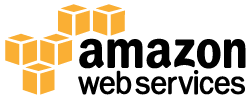This blog is an excerpt from GovLoop’s recent guide, “Tech Priorities for a Modern State and Local Government.”
Constrained budgets, increasing workloads, and rising citizen expectations. It’s no secret that state and local governments have to do more with less in today’s environment. To accomplish that task, many agencies are turning to their data to understand how to increase efficiencies and better understand their landscape. But when they use traditional data processes and rely on legacy tools, those agencies often find themselves increasing their workloads as they try to maintain the ever-increasing volume of data.
In a recent interview, Kim Majerus, Leader of State and Local Government Business at Amazon Web Services (AWS), a leading commercial cloud provider, impressed that agencies have to move beyond data collection and start analyzing their data to truly understand their environment. “Instead of doing, they have to be solving,” Majerus said.
In other words, city and state governments can no longer dedicate constrained resources to managing physical servers, provisioning additional services, providing patch updates, and other maintenance tasks. That’s where cloud can help. Organizations and governments worldwide are repurposing infrastructure budgets to invest in innovation. “It allows agencies to move to the next generation to collect, analyze, and derive insights from their data,” Majerus said. “It lets them solve citizens’ problems.”
Cloud computing automates and simplifies many of the maintenance tasks associated with traditional infrastructure and data management solutions. This allows IT administrators to focus on more strategic issues, while simultaneously streamlining workflows and increasing collaboration among staff.
Majerus offered an example to showcase how cloud helps state and local governments move beyond data collection to analytics:
The city of Los Angeles is one of the largest targets for cyberattacks in the nation. Due to the size of the city’s operations — 35,000 employees distributed across 37 different departments — on an average day, the city records more than 130 million security messages from more than 120,000 connected devices.
The city needed a better way to ingest this data, process it, and identify security events to better monitor potential security incidents and coordinate their incident response teams. To do this, the city of Los Angeles leveraged the AWS Cloud to provide storage and compute power for its custom-developed security information and event management (SIEM) system, which supports their integrated Security Operations Center (SOC).
“Before, they were very siloed in nature,” Majerus said. “Now they can make real-time decisions based not only on historical data, but real-time data that they’re collecting through sensors.”
With AWS Cloud collecting and analyzing complex data from across Los Angeles, the five cybersecurity teams that support the city can more effectively manage their security operations and process security events across departments faster, resulting in faster response times.
Other state and local agencies are starting to reap similar rewards through cloud adoption. However, Majerus cautioned against simply equating cloud adoption with innovation. To truly gain the benefits of cloud, agencies will need to partner with a cloud provider that can offer services and support tailored to agency’s specific needs.
That’s why AWS offers more than 90 services within its cloud portfolio. “We’re customer obsessed,” said Majerus. “We’re constantly iterating on the services we offer to our customers, in fact 90 percent of our product roadmap comes from customer feedback.”
For many state and local agencies, security and compliance are also top concerns. They need cloud providers like AWS who can meet a range of security regulations and standards, including HIPAA and FedRAMP certifications, in order to ensure government data remains secure.
Finally, given the increased reliance on the Internet of Things to monitor government networks and the infrastructures they maintain, agencies need a cloud solution that can integrate a variety of data formats from across myriad sensors and tools. Plus, they’ll need a scalable cloud environment that can quickly expand as these connected devices proliferate, without dramatically increasing costs.
But for those just beginning their cloud journey, the environment can be daunting. The everchanging landscape of cloud options, attributes, and providers can make it challenging for those building a customized, prescriptive cloud infrastructure because there is no off-the-shelf solution. To make sure you’re getting the most out of cloud, Majerus ultimately recommended seeking a provider that acts as a partner in addressing your agency’s unique needs.
“It actually comes down to having a partnership in the field to sit down and work with agencies to solve problems,” she concluded. Cloud solutions can empower agencies to move beyond day-to-day maintenance to truly innovate the way government serves citizens, but it takes a responsive partner provider to truly reap the rewards that cloud can offer.
For more information about how to innovate state and local government, you can find the full guide here.






Leave a Reply
You must be logged in to post a comment.